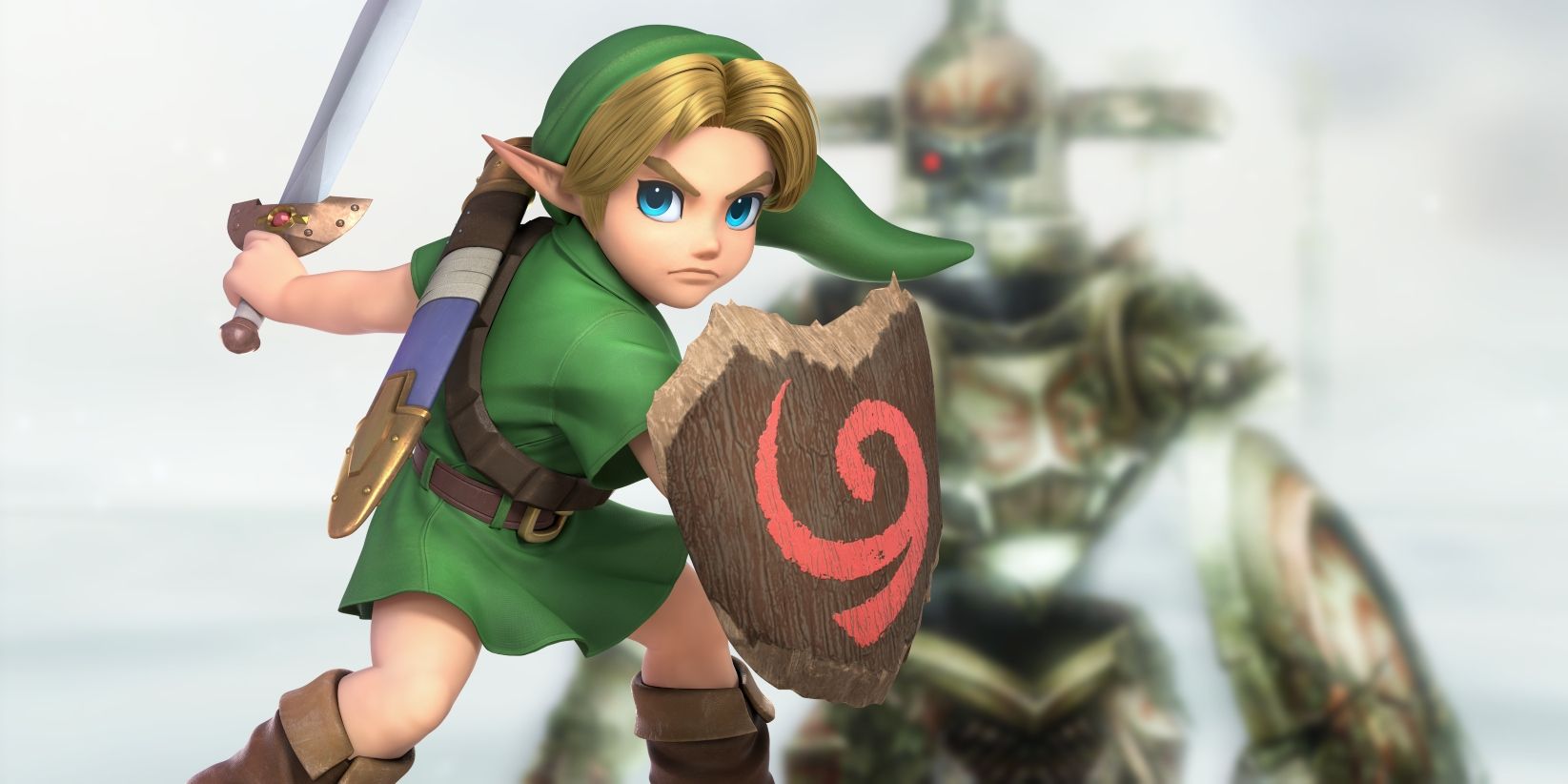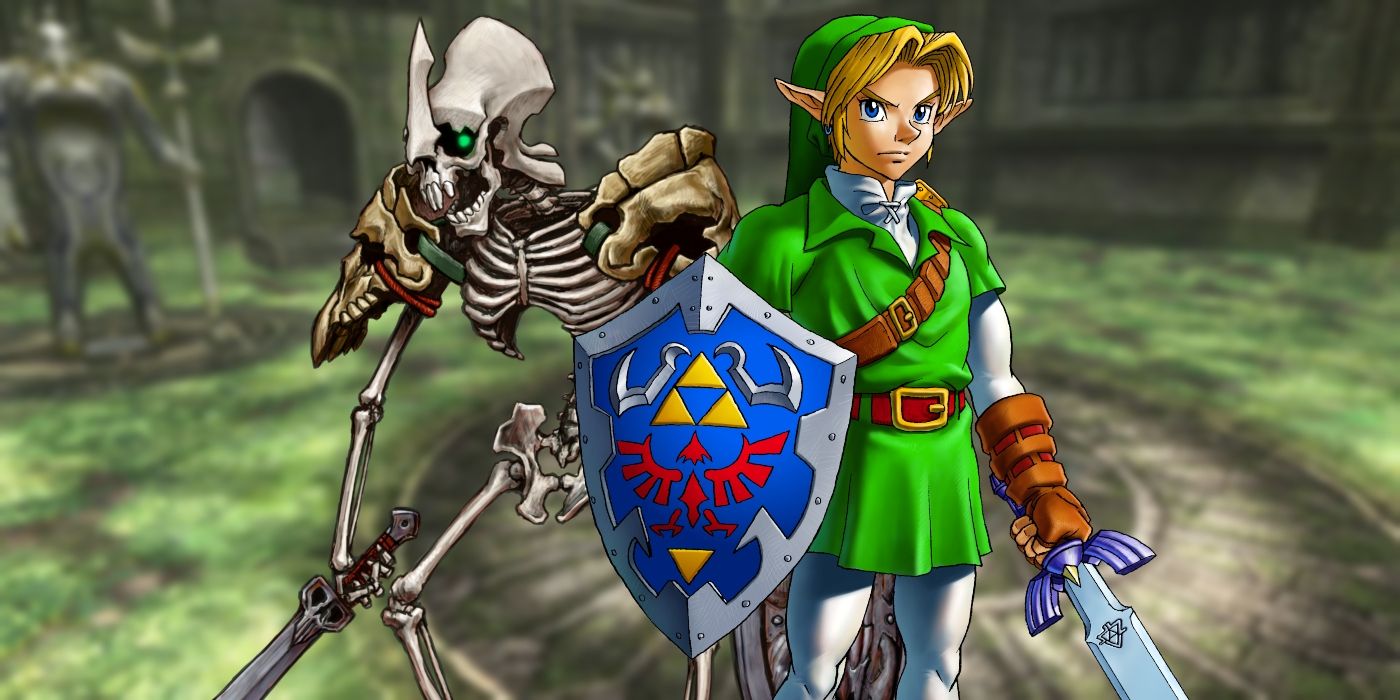
The story of the Hero of Time, The Legend of Zelda: Ocarina of Time's version of Link, is the Zelda series' darkest and most tragic tale. Despite its colorful visuals, Ocarina of Time is about a child losing his innocence, and no one remembers the heroic deeds he traded it for.
As Zelda's first foray into 3D, Ocarina of Time joined games like Metal Gear Solid (released just a month earlier on the original PlayStation) in establishing the kind of cinematic storytelling video games could accomplish with the added dimension. Its bright, fantastical setting was paired with elements of horror, like Castle Town's transition from vibrant market to ReDead-filled ruins. These unnerving moments helped set Ocarina of Time apart from Nintendo's previous flagship 3D offering, Super Mario 64, and things got even darker in Ocarina's sequel, Majora's Mask.
But even beyond these snippets of terror, embedded within Ocarina's core plot is a story arguably more mature than any Zelda game before or since. Link's time-traveling journey from boy, to man, to boy again is more subtly dark than Majora's Mask or Twilight Princess, forming the series' most emotionally affecting tale yet.

After retrieving the Master Sword from its pedestal, Ocarina of Time's young Link (orphaned by a mysterious war) is locked away in the Sacred Realm by the Sage Rauru for seven years. In opening the Sacred Realm in the first place, Link unwittingly exposed it to the evil Ganondorf, allowing him to touch the Triforce and be granted control over Hyrule. This plunges the land into darkness and chaos, and Link must kill Ganondorf to rid the land of his corruption. Afterwards, he's sent back to his childhood, into the Zelda timeline where Ganondorf never took over in the first place.
Because Link now lives in a period where Ganondorf never rose to power, no one around him knows of his heroics. He's just a normal kid again - except, of course, he's not. His childhood innocence is gone as a result of the horrors he's seen. And to make matters worse, he can't go back to his home in Kokiri Forest because Navi, the fairy who signified him as one of the forest's forever-young inhabitants, left him at the end of Ocarina. With no family or friends (besides the inaccessibly Saria and Zelda), Link wanders away from Hyrule in search of Navi, leading to the events of Majora's Mask.
This basic plot is obviously sad, from Link's lost childhood to his lack of control of his own destiny. But its execution through Ocarina's writing is what makes it so unique for the series. As YouTube's Javed L. Sterritt and Satchell Drakes pointed out in a popular video essay, other Zelda games openly refer to "sadness," "regret," and "despair," whereas Ocarina of Time created an equally sad story without such overt language. Ocarina's dialogue instead focuses on restoring purity and returning to innocence, and characters constantly remind Link of his relative age. This latter fact helps Ocarina of Time's ending hit home: Though Link successfully returns Hyrule to its former state, he himself can never revert back to the person he was.
Later on in the Zelda series, this emotional damage takes on a literal form. In Twilight Princess, the Hero of Time returns as the undead Hero's Shade, a skeletal warrior who teaches the Hero of Twilight sword techniques. According to 2013's Hyrule Historia, the Hero of Time "lamented the fact that he was not remembered as a hero." Tethered to the world by this regret, he sought to pass on his knowledge as "proof of his courage." One popular fan theory explains Link's transformation to the Shade in a different way: The Lost Woods, which surround Kokiri Forest, are said to turn humans into Stalfos, Zelda's skeletal enemies. Without Navi, Link would be considered a human, so some fans think he wandered back into the forest after Majora's Mask, becoming lost and transforming into his undead form as he searched for his old home. If true, this would be a fittingly tragic end for Zelda's most tragic hero.
The Legend of Zelda: Ocarina of Time released for the Nintendo 64 on November 23, 1998.
from ScreenRant - Feed https://ift.tt/3dtJ0vC


0 Comments